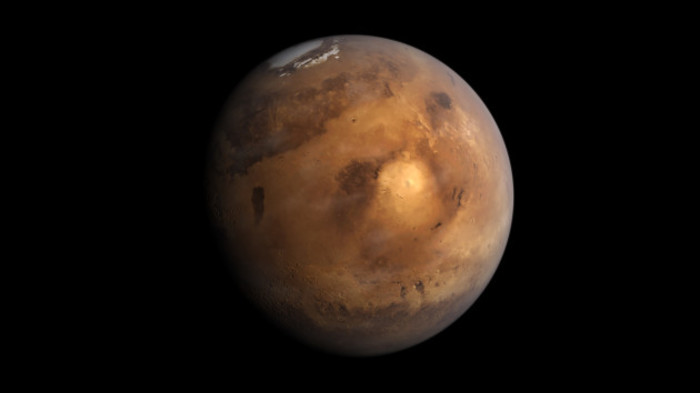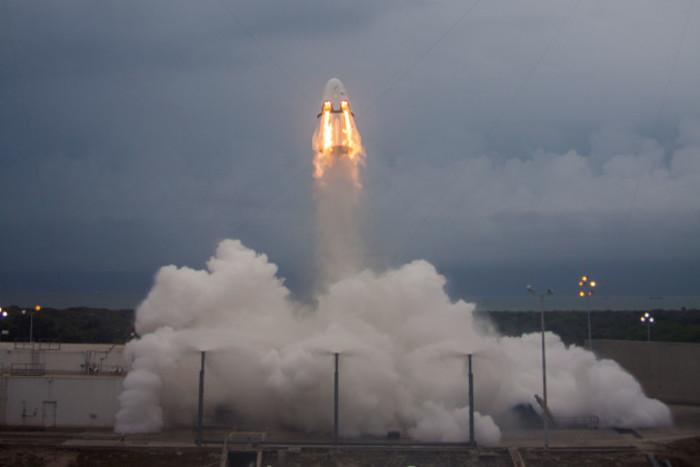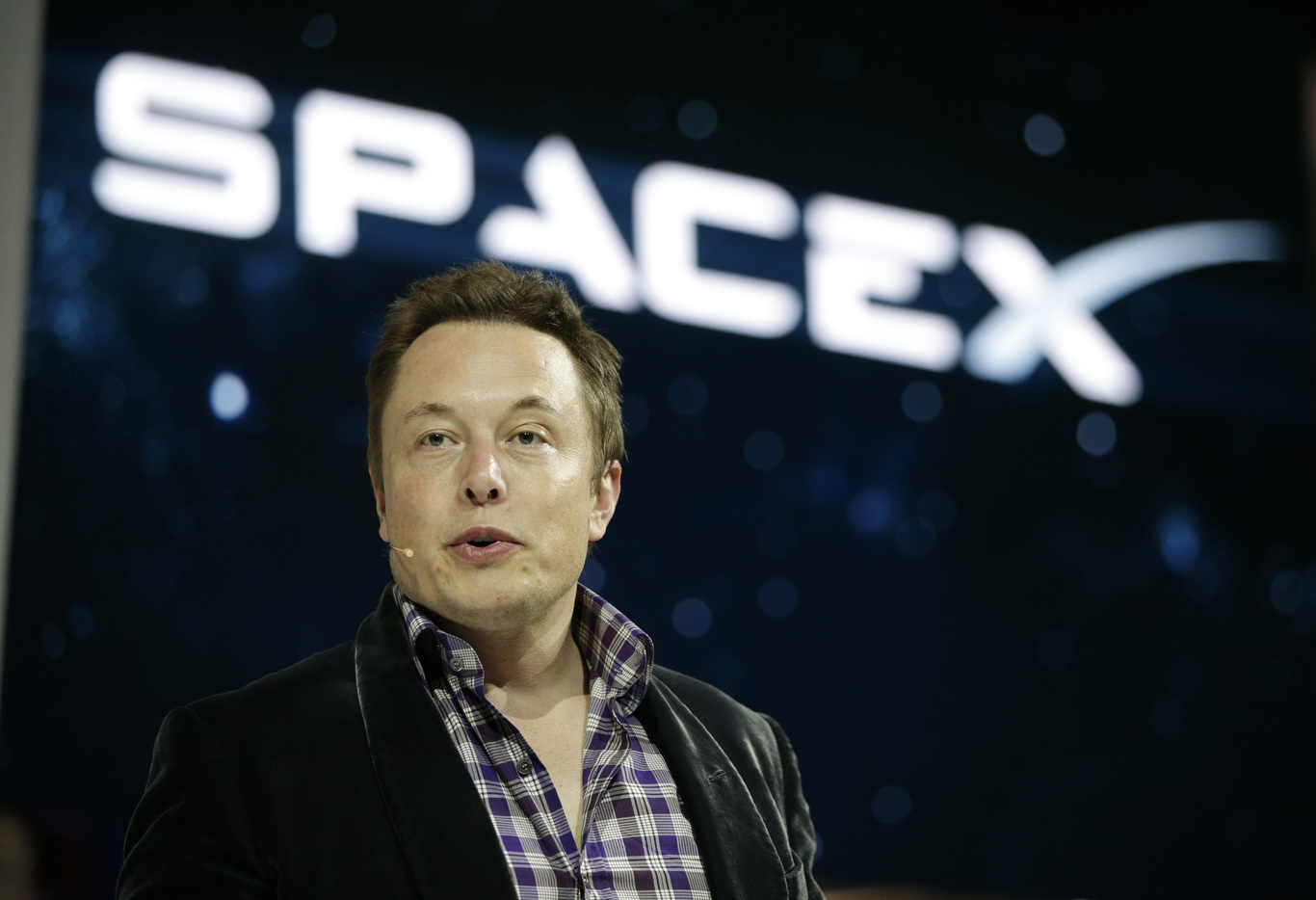Your crash course in... The company gearing up to send life to Mars
SpaceX founder Elon Musk is expected to reveal the details of his company’s mission to the red planet later this month.
THE FUTURE OF spacecraft manufacturer SpaceX was up in the air earlier this month after the company suffered what its founder, billionaire entrepreneur Elon Musk, called its “most difficult and complex failure”.
SpaceX, short for Space Exploration Technologies Corporation, was set up 14 years ago to make space travel cheaper and ultimately colonise Mars, but that dream was dealt a major blow after an unmanned Falcon 9 rocket was destroyed in a massive explosion before a routine test launch at Cape Canaveral Air Force Station in Florida this month.
It was the same model rocket that is used to send supplies to the International Space Station.
There were no injuries, but a satellite designed by Israeli operator Spacecom was incinerated in the blast, which has jeorpardised a potential buyout of the Tel Aviv-based company by Beijing Xinwei Technology Group. It was set to acquire the Israeli firm for $285 million on the condition of a successful launch of the Amos-6 satellite.
Facebook also had a vested interest in the launch since it had leased some of the satellite’s capacity to provide internet access to sub-Saharan Africa.
As well as losing the rocket, SpaceX must now pay $50 million in compensation to Spacecom, which will also receive a $39 million insurance payout.
Doubt
Coupled with another explosion in June of last year, the incident a fortnight ago has cast doubt over SpaceX’s ability to meet its target of 18 launches by year-end – three times more than 2015. Musk’s company had accelerated the number of launches to make up for the backlog created by the accident last summer.
A coalition of 20 people from the company, the US Federal Aviation Administration, NASA and the US Air Force is currently investigating the cause behind the blast two weeks ago.
Ever the optimists, SpaceX’s chief operating officer Gwynne Shotwell said on Tuesday that the company expects to restart flights in November, but living up to that promise could be tricky since the 2015 disaster grounded Falcon 9 for six months.
As if the company didn’t have enough on its plate, Musk is expected to spell out his plans for sending humans to the red planet during a keynote speech at the International Astronautical Congress later this month.
With that in mind, let’s look at SpaceX’s achievements – and failures – so far.
Mars
At the turn of the millennium, Elon Musk, the eccentric chief executive of Tesla Motors and co-founder of PayPal, proposed the idea of sending plants and mice to Mars by purchasing a refurbished rocket from Russia.
He wanted to achieve the impossible and introduce life to Mars.
Worried about the state of his mental health, Musk’s friends and colleagues staged a number of interventions at the time to deter him from embarking on the project, which they considered an enormous waste of money – at the time, Musk was only a mere multi-millionaire and hadn’t yet reached billionaire status.
Musk persisted and met with Russian designers on two trips in 2001 and 2002, but turned down an offer to buy a missile from manufacturer Kosmotras for $8 million because he thought it was too expensive.
 Planet Mars
Planet Mars
On the journey home to the US, Musk conceived the idea for SpaceX, a spacecraft manufacturer that would create reusable rockets at a lower cost by building machinery and launchpads in-house instead of outsourcing to multiple suppliers.
He founded the company in 2002, setting up shop in a warehouse outside Los Angeles and started hiring engineers right away. Today, the company employs more than 4,000 people.
SpaceX moved its headquarters to its current location at Rocket Road in California a year after the successful launch of its first rocket, Falcon 1, in 2008.
Despite the achievement, the company faced a serious cash shortage that year after four failed attempts to launch Falcon 1 since 2006.
At the time, Musk’s other company, Tesla, was haemorrhaging money and the breakdown of his marriage to Justine Wilson turned into a very public divorce – his ex-wife blogged about the ordeal.
However, his luck changed by the end of 2008 when NASA awarded SpaceX with a coveted $1.6 billion contract for 12 resupply missions to the International Space Station (ISS).
Other rockets
SpaceX has manufactured three vehicles, one of which has yet to make its debut.
The next-generation Falcon 9 model, named after its nine engines, was already in development before Falcon 1 got off the ground.
Unlike its predecessor, Falcon 9 was partially funded by NASA in exchange for three demonstration flights. It has completed 25 flights since 2010, delivering satellites for communications companies like Thaicom and Orbcomm.
Together with the Dragon spacecraft, it has so far completed nine cargo deliveries to the ISS, making SpaceX the first private company to carry out such a mission.
 SpaceX's Dragon
SpaceX's Dragon
As well as carrying cargo, Dragon is capable of delivering human astronauts to the ISS.
Manned flights were slated for 2017, then pushed back to early 2018, but hang in the balance after the Falcon 9 failure.
Dragon’s direct competitor is Boeing’s Starliner vehicle and the two companies are battling it out to send NASA astronauts into space after the agency retired its shuttle programme in 2011.
NASA desperately needs an American vehicle to come on the market – its astronauts currently have to hitch a ride with Russia’s spacecraft, Soyuz, to the ISS at €70 million a seat, according to Popular Science magazine.
Although Starline is only in the design phase, it has also been tipped for manned flights by 2018.
Next big thing
Never the type to do things in small measures, Musk is also working on the beastly Falcon Heavy machine.
It is four years behind its original launch date and probably won’t get off the ground until the first quarter of 2017 at this stage, but SpaceX hopes it will allow the company to ramp up its cargo delivery service.
The heavy-hitter will apparently have the ability to lift 54 metric tonnes, the equivalent of a 737 aircraft loaded with passengers, crew, luggage and fuel. That’s twice more than its nearest competitor, the Delta IV Heavy.
But for now, SpaceX’s entire operation will stay firmly on the ground.






